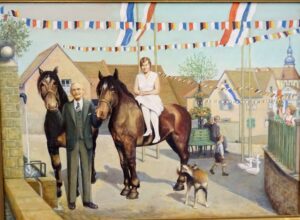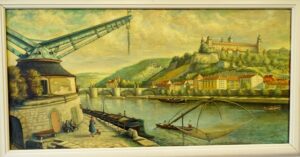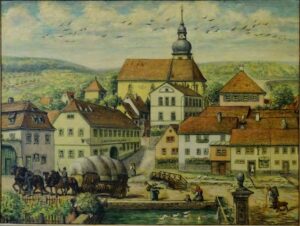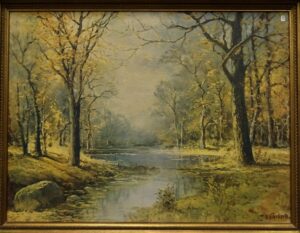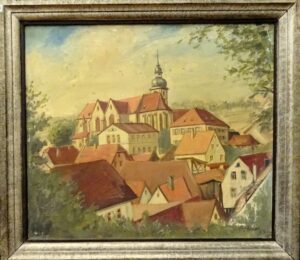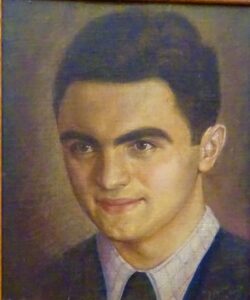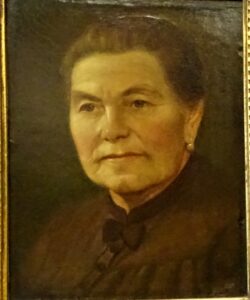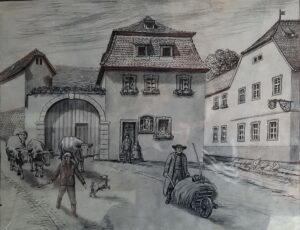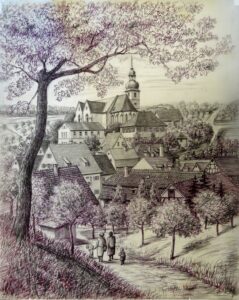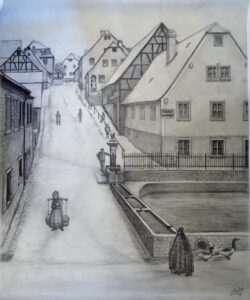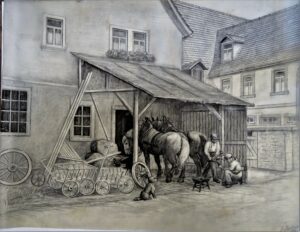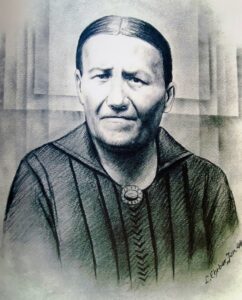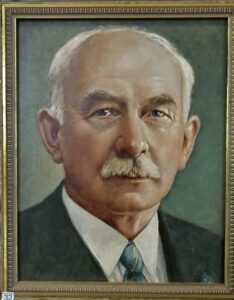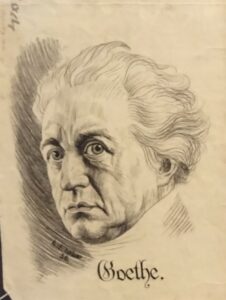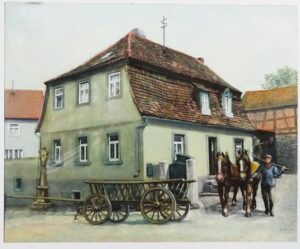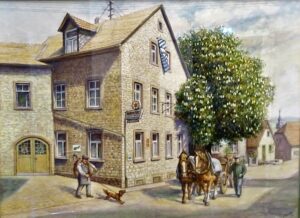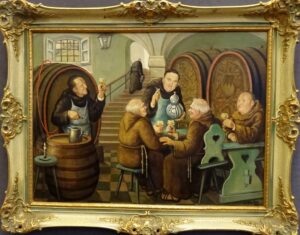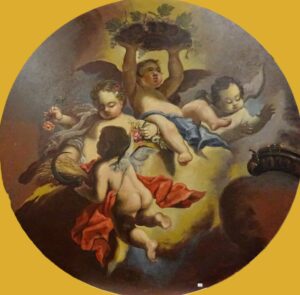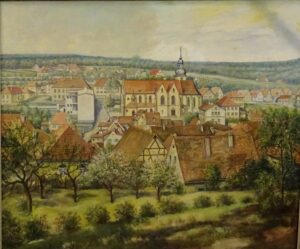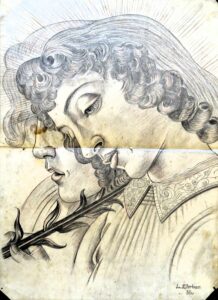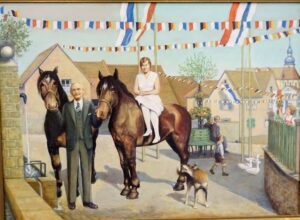Ludwig Ehrbar
This highlight is dedicated to the church restorer and painter Ludwig Ehrbar who was born in his parents’ house at Brunnengasse 17 on 16 August 1922. He remained loyal to his home parish until his death at the age of 53 years only on August 2, 1975. 1, 2 , 4
Next to the house where he was born was the home and studio, built for him by his father.
Next to the house where he was born was the home and studio, built for him by his father.
Ehrbar used it as a source of inspiration because of the beautiful view over the old town.
He was already producing views of the village at the age of 12 and attended the Würzburg drawing school.
At the age of 16, he created portraits of great personalities that he painted from photographs. At the age of 17, Ludwig was drafted into the Wehrmacht and quickly made a name for himself as a draughtsman of strategic situations during the war in Russia.
One of Ludwig Ehrbar’s sponsors was Anton Menna, the founder of the restoration company of the same name. He lent his aid unreservedly to Ludwig in order to have him join the group of church painters and restorers in his company.
One of Ludwig Ehrbar’s sponsors was Anton Menna, the founder of the restoration company of the same name. He lent his aid unreservedly to Ludwig in order to have him join the group of church painters and restorers in his company.
He was self-taught and rejected academic studies.
Nevertheless, he was able to complete like hardly any other restorer scenes that had been lost or completely repaint pictures in the Nazarene style.7
As a freelancer, Ehrbar had privileges in Bad Mergentheim on the premises of the church restoration company, such as his own flat and a small studio.
He was responsible for restoring and adding to Stations of the Cross and ceiling paintings among others in Neresheim, Schöntal Abbey and Bronnbach Abbey.
From 1972, he withdrew more and more from the restoration business and increasingly focussed on his home parish.
Here he often painted unselfishly for many private individuals and was also intensively involved in associations, e.g. in the design of room decorations, wall- and peasant paintings. 3, 5
Painting was the most important thing for him throughout his life, but his works also included prints, sketches and drawings. 6
Painting was the most important thing for him throughout his life, but his works also included prints, sketches and drawings. 6


